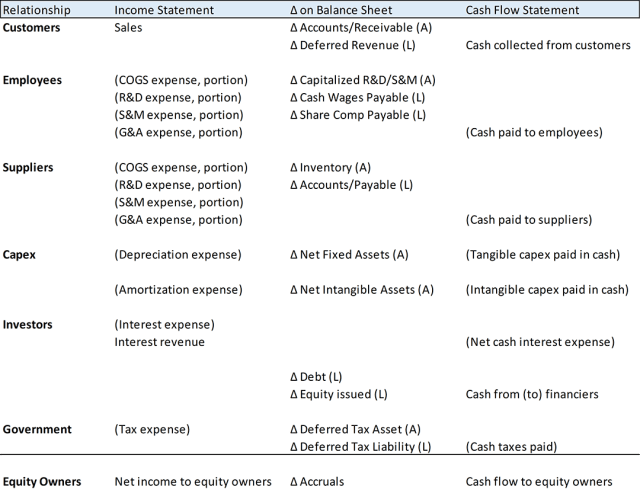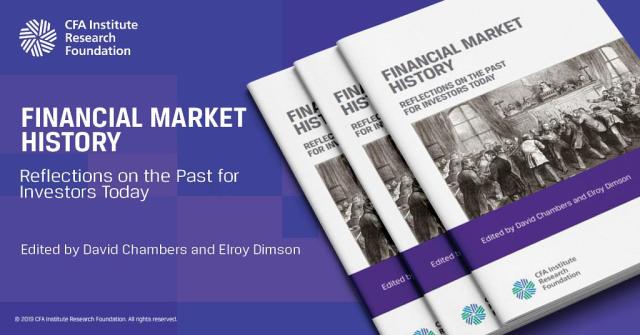[ad_1]
Every mismatch between GAAP metrics and business reality is a potential alpha opportunity.
You can find
significant alpha in the mechanics that drive GAAP accounting.
Investors can buy
companies with temporarily ugly numbers and short stocks with superficially
good reports. Entrepreneurs can better market their equity to potential
investors and beat the competition in the fundraising race.
Why does this alpha exist? Because analysis based on generally accepted accounting principles (GAAP) is a victim of its own success. The framework once used to evaluate 19th-century railroads is largely the same one we use today to assess digital networks, raise capital for pharmaceutical candidates, and finance modern industrial projects. The model is robust, but some metrics are in need of an update.
GAAP has two major shortcomings: it doesn’t show sample journal entries that lead from a transaction to a company’s books, and it doesn’t make it easy to identify the participants in each transaction. Every business has only a few types of key relationships — customers, employees, suppliers, investors, competitors, the government, and the public at large. Companies track these relationships; GAAP does not.
The solution is simple. Walk through the major GAAP drivers from journal entries to public reporting and parse out those relationships to reframe our existing metrics. I’ll spare you a long weekend with the Accountants’ Handbook and start with my conclusions:
- “Revenue” isn’t revenue — it’s contract timing.
- The cash conversion cycle should be measured as a percentage and include deferred revenue.
- “Free cash flow” isn’t free cash flow — it’s an accrual metric.
- Weighted average cost of capital (WACC) should include all liabilities.
- Equity and share-based compensation should be marked to market.
How can you use this
to generate alpha? By recognizing how reported GAAP numbers will attract or
repel investment capital. It’s not enough to find an accounting flaw that will
later resolve itself. You need to grasp how other investors will trade on that
information in order to capture the mispricing.
Return on equity
(ROE) is the glue that holds GAAP together, so that’s where we’ll start.
Why Can’t We Just Use ROE?
The idea of
risk-adjusted return on capital existed long before economists invented a term for it. The old merchants
of Venice may not have anticipated modern rules on whether to book revenue this
year or next year, but they surely thought hard about their return on
investment (ROI). What gets measured gets managed, so double-entry accounting was
adopted to track businesses and reduce bookkeeping mistakes.
In the early 20th century,
Donaldson Brown at the DuPont
Company pioneered a double-entry accounting method for business analysis. He
broke down the inputs to after-tax earnings per each invested dollar, isolating
which drivers matter most for a company’s ROI. Everyone today calls this return on equity (ROE)
analysis.
The DuPont Return on Equity Formula

So long as revenue, expenses, assets, and liabilities are accurately booked, decision makers can apply the DuPont ROE formula to identify where their business units are outperforming or underperforming.
The problem, as we all know, is that accounting does not perfectly correspond to business reality.
Mapping GAAP to Relationships
Businesses don’t
run on accounting outcomes. They run on relationships.
No entrepreneur worth their salt needs a consultant to tell them how to build a competitive moat or to earn a high ROE. They would, however, like to hear about a cost-effective customer acquisition channel or an untapped pool of talented employees. Their business’s GAAP accounting outputs are tied to the relationships that they build and maintain.
Just like Donaldson
Brown broke ROE down into its constituent parts, we should categorize each line
item in GAAP accounting by the type of business relationship involved.
Categorizing GAAP by Relationships*

This framework helps to distinguish which relationships are working well and which aren’t. We can follow each line item across the financial statements and dig into which relationship drives each shift. Excel-related questions on quarterly analyst calls could be all but eliminated (though perhaps I’m dreaming here).
But companies today
don’t report their statements from the journal entries on up, and their
business relationships are underappreciated in our current methods of analysis.
These openings are
your alpha opportunity.
In the next memo, we’ll apply this new perspective to revenue recognition, the cash conversion cycle, and free cash flow.
More insights from Luke Constable can be found in the Lembas Capital Library.
If you liked this post, don’t forget to subscribe to the Enterprising Investor.
* This simplified figure only represents a company’s financial relationships, but, of course, not all of a company’s relationships result in a financial contract. To make it easy to follow, I’ve only included the relationships that fit into current GAAP reporting.
All posts are the opinion of the author. As such, they should not be construed as investment advice, nor do the opinions expressed necessarily reflect the views of CFA Institute or the author’s employer.
Image credit: ©Getty Images / Vahe Aramyan
Professional Learning for CFA Institute Members
CFA Institute members are empowered to self-determine and self-report professional learning (PL) credits earned, including content on Enterprising Investor. Members can record credits easily using their online PL tracker.
[ad_2]
Image and article originally from blogs.cfainstitute.org. Read the original article here.




